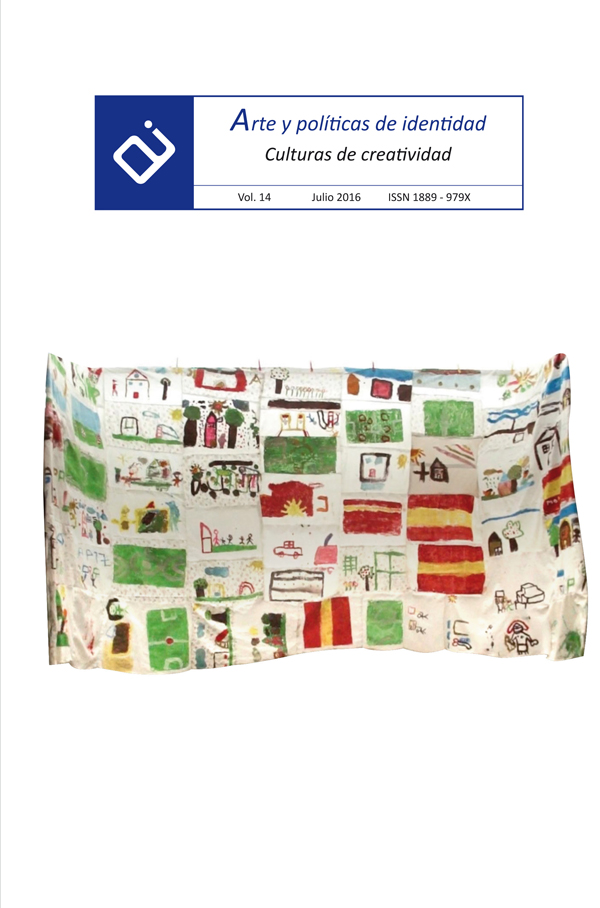Creativity in Design Data Collecting Instruments
Space preferences Experienced by School-age Children
Abstract
The environmental scholar experience by school-age children, and the sensational reflections, generated by their stimuli; are interesting to stipulate as aesthetic quality of educational centres. New data collecting instruments are necessary, to allow researchers approach smaller scholar voices. From Arts based Research and by using fostering creativity techniques, we propose an instrument that combines: participant observation, like a way to get closer; the interview and visual language, to express answers; and documental analysis by categories, to obtain information.
The study shows the results of plural research, developed at 3 schools in Alicante city. It categorizes the preferred places between early years. The conclusions demonstrate the relation between aesthetic pleasure, pedagogic activities which stimulate all senses, and educational environment.
Downloads
-
Abstract492
-
PDF (Español (España))649
References
Alonso-Sanz, A. (2013). A favor de la Investigación Plural en Educación Artística. Integrando diferentes enfoques metodológicos. Arte, Individuo y Sociedad, 25(1), 111-120. DOI: 10.5209/rev_ARIS.2013.v25.n1.41167
Augé, M. (2000). Los “no lugares” espacios del anonimato. Una antropología de la Sobremodernidad. Barcelona: Gedisa. (Edic. orig. en francés, 1992)
Bowen, G. A. (2009). Document Analysis as a Qualitative Research Method. Qualitative Research Journal, 9 (2), 27-40. doi: http://dx.doi.org/10.3316/QRJ0902027
Buke, C., y Grosvenor, I. (Editores) (2003). The School I’d Like. Children and Young People’s Reflections on an Education for the 21st Century. New York: Routledge Falmer.
Cabrera, J. (2009). Creatividad hoy. Una evolución hacia mayores niveles de conciencia y complejidad. Educación y Futuro. Revista de Investigación Aplicada y Experiencias Educativas, 21: Monográfico: “Creatividad en Educación”, 15-42.
Clandinin, D. J. y Murphy, M. S. (2009). Comments on Coulter and Smith: Relational Ontological Commitments in Narrative Research. Educational Researcher, 38(8), 598-692.
Csikszentmihalyi, M. (1998). Creatividad. El fluir y la psicología del descubrimiento y la invención. Barcelona, España: Paidós Ibérica.
Day, C., Sammons, P., y Gu, Q. (2008). Combining qualitative and quantitative methodologies in research on teachers’ Lives, work, and effectiveness: from integration to synergy. Educational Researcher, 37(6), 330-342.
Dryssen, C. (2010). Navigating in heterogeneity: Architectural thinking and art-based research. En M. Biggs y H. Karlsson (eds.), Routledge Companion to Research in the arts. Londres y Nueva York: Taylor & Francis Group.
Guilera, Ll. (2011). Anatomía de la creatividad. Sabadell, España: FUNDIT - Escola Superior de Disseny ESDi.
Huber, J. Caine, V., Huber, M. y Steeves, P. (2013). Narrative Inquiry as Pedagogy in Education: The Extraordinary Potential of Living, Telling, Retelling, and Reliving Stories of Experience. Review of Research in Education, 37, 212-242.
Lifante, Y. (2013). Ingenieros creativos. Valencia: Alfa Delta Digital.
Marín-Viadel, R. (2005). La “Investigación Educativa Basada en las Artes Visuales” o “Arteinvestigación educativa”. En R. Marín (Ed.), Investigación en Educación Artística (pp. 223-274). Granada: Editorial Universidad de Granada.
Marín-Viadel, R., Roldán, J. y Pérez Martín, F. (eds.). (2014). Estrategias, técnicas e instrumentos en Investigación basada en Artes e Investigación Artística [Strategies, techniques and instruments in Arts based Research and Artistic Research]. Granada: Universidad de Granada.
Mollenhauer, K. (1990). ¿Es posible una formación estética? Educación, 42, 64-85.
Works published in this journal are subject to the following terms:
- The Service of Publications from the University of Murcia (publishing house) keeps the published works’ copyrights, and favors and allows the reuse of these works under the license indicated in point 2.
- Works are published in the journal’s online edition under the license Creative Commons Reconocimiento-NoComercial-SinObraDerivada 3.0 España(texto legal). They can be copied, used, disseminated, transmitted and publicly exhibited, as long as: i) the author and original source of publication are cited (journal, publishing house and work’s URL); ii) they are not used for commercial purposes; iii) the existence and specifications of this license are mentioned.
3. Conditions for auto-file. It is allowed and encouraged that authors share electronically their pre-print version (the pre-reviewed version) and /or post-print version (the reviewed and accepted version) of their Works before the publication, since it promotes its circulation and dissemination. RoMEO color: green.










